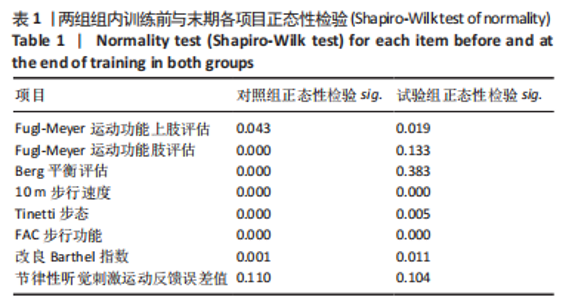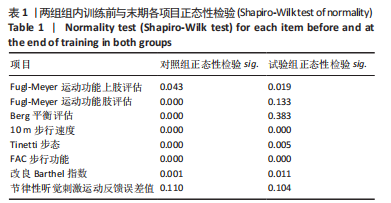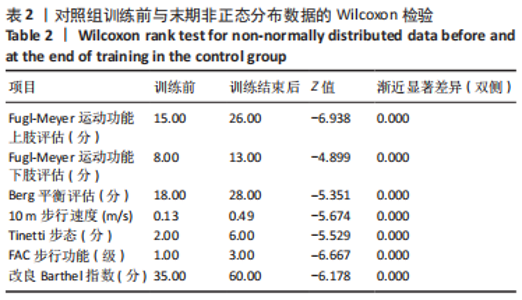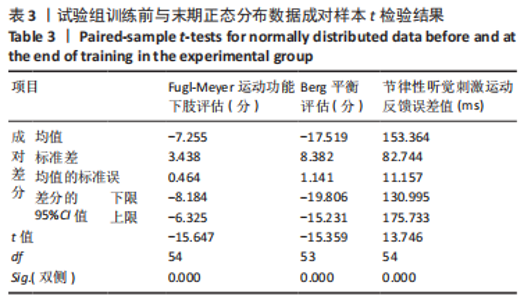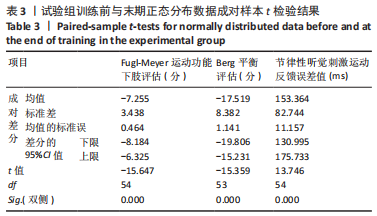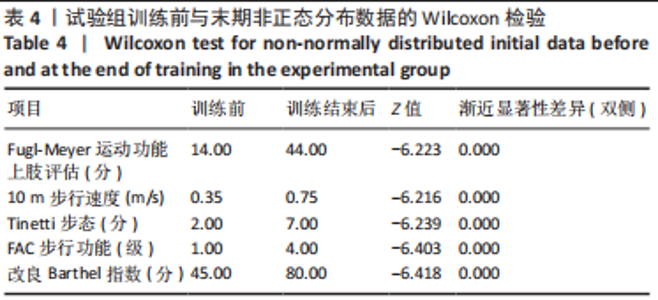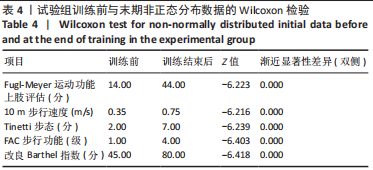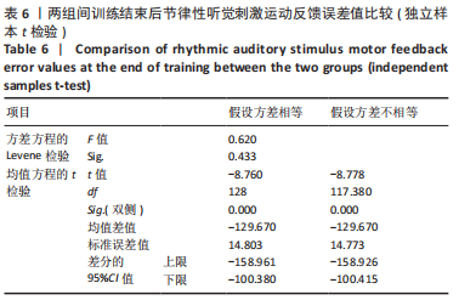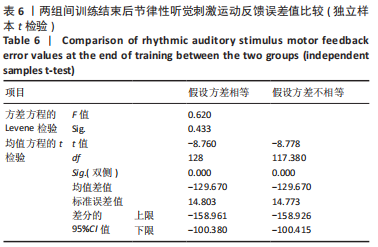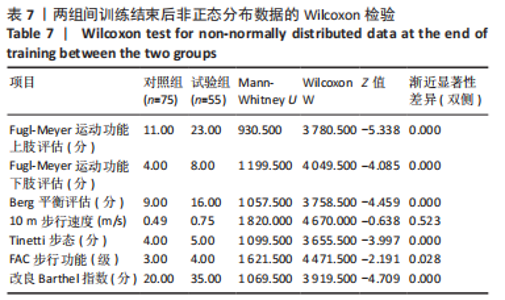[1] 国家卫生健康委脑卒中防治工程委员会.中国脑卒中防治指导规范(合订本)[M].北京:人民卫生出版社,2022:450-454.
[2] 川平和美.片麻痹回復のための運動療法•促通反復法「川平法」の理論と実際[M].3版.医学書院,2018:19.
[3] JUERGEN BECK. SIMC康复学科2018-2019年度康复临床成果及质量报告, Prognos AG. Die medizinische Rehabilitation Erwerbstätiger. ‒ Sicherung von Produktivität - und -Wachstum.2017. Available from: tps://max.book118.com/html/2020/0609/8055061123002115. Shtm.
[4] KWAKKEL G. Understanding dynamics of motor recovery after stroke. Ann Phys Rehabil Med. 2013;56(1):177.
[5] (美)弗诺特拉.Delisa物理医学与康复医学理论与实践[M].毕胜,黄晓琳,译.北京:人民卫生出版社,2013:1655-1657.
[6] CRAMER SC, KOROSHETZ WJ, FINKLESTEIN SR. The case for modality-specific outcome measures in clinical trials of stroke recoveiy-promoting agents. Stroke. 2007;38:1393-1395.
[7] 高修明,郭琳,徐思维,等.节律性谐振在异常步态中的应用及治疗进展[J].中华物理医学与康复杂志,2019,41(4):317-320.
[8] 中华医学会神经病学分会,中华医学会神经病学分会脑血管病学组.中国脑血管疾病分类(2015)诊断标准[J].中华神经科杂志,2017, 50(3):168-171.
[9] BECKELHIMER SC, AE DALTON, RICHTER CA, et al. Computer-based rhythm and timing training in severe, stroke-induced arm hemiparesis. Am J Occ up Ther. 2011;65(1):96-100.
[10] LIU SW, DUAN CQ. Interactive metronome applied in the rehabilitative treatment of the central nervous system. Chin J Tissue Eng Res. 2017; 16(21): 2620.
[11] HOVE MJ, KELLER PE. Impaired movement timing in neurological disorders: rehabilitation and treatment strategies. Annals of the New York Academy of Sciences. 2011;337:111-117.
[12] SHANK TM, HARRON W. A retrospective outcomes study examining the effect of interactive metronome on hand function. J Hand Ther. 2015;28(4):396-401.
[13] ZIEREIS S, JANSEN P. Effects of physical activity on executive function and motor performance in children with ADHD. Res Dev Disabil. 2015; 38:181-191.
[14] 宋金辉,杨晶晶,李洋,等.节律性听觉刺激联合减重步行训练改善帕金森病患者步态功能[J].中风与神经疾病杂志,2018,35(3):242-244.
[15] 邱纪方,徐聪琴,胡滨,等.步歌在帕金森病康复治疗中的应用[J].中国康复医学杂志,2019,34(3):349-352.
[16] NELSON L, MACDONALD M, STALL C, et al. Effects of interactive metronome therapy on cognitive functioning after blast-related brain injury: a randomized controlled pilot trial. Neuropsychology. 2013; 27(6):666-679.
[17] YU GH, Lee JS, Kim SK, et al. Effects of interactive metronome training on upper extremity function, ADL and QOL in stroke patients. NeuroRehabilitation. 2017;41(1):161-168.
[18] WRIGHT RL, BEVINS JW, PRATT D, et al. Stepping to an Auditory Metronome Improves Weight-Bearing Symmetry in Post-Stroke Hemiparesis. J Appl Biomechanics. 2018:1-5. doi: 10.1123/jab.2017-0358.
[19] 葛亚丽,张甜甜,张大华,等.节律性听觉刺激在脑卒中后步行障碍中的应用[J].中华老年医学杂志,2018,37(3): 351-355.
[20] MCGREW KS. The science behind interactive metronome: An integration of brain clock, temporal processing, brain network and neurocognitive research and theory. The MindHubTM Pub. 2013;(2):2-3.
[21] 邱纪方,邵梦鸣,钱志勇,等.步歌在帕金森病患者康复中的应用研究[J].中国康复医学杂志,2022,37(1):46.
[22] THOMPSON S, HAYS K, WEINTRAUB A, et al. Rhythmic Auditory Stimulation and Gait Training in Traumatic Brain Injury: A Pilot Study. J Music Therapy. 2021;58(1):70-94.
[23] SHERIDAN C, THAUT C, BROOKS D, et al. Feasibility of a rhythmic auditory stimulation gait training program in community-dwelling adults after. Neuro Rehabilitation. 2021;48(2):221-230.
[24] THAUT MH, RICE RR, BRAUN JANZEN T, et al. Rhythmic auditory stimulation for reduction of falls in Parkinson’s disease: a randomized controlled study. Clinic Rehabilitations. 2019;33(1):34-43.
[25] KIM JH, HAN JK, HAN DH. Training effects of Interactive Metronome® on golf performance and brain activity in professional woman golf players. Hum Mov Sci. 2018;61:63-71.
[26] 王娟,赵凯,徐梅.功能性电刺激同步节奏性听觉刺激对脑卒中患者下肢运动功能的影响[J].中国康复医学杂志,2019,34(5):566-569.
[27] HU B, CIHAL S, CLARK T. Ambulo Sono: A sensorimotor contingency--based musical walking program for people living with Parkinson’s disease. Mov Disord. 2013;28(Suppl1):792.
[28] LUCAS D, CROSBY, JENNIFER S, et al. Stimulation and the Relationship to Rhythm Ability Following Stroke October. Front Neurol. 2020;(11): 517028.
|


